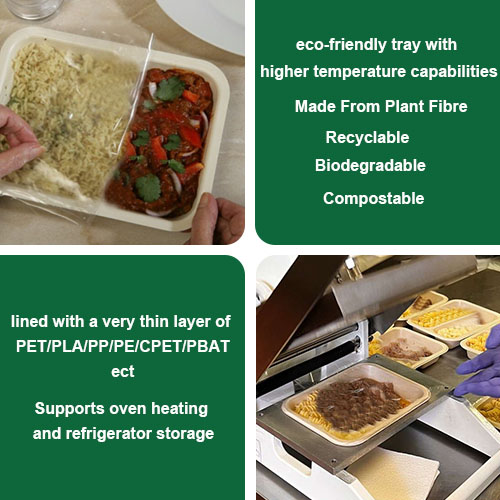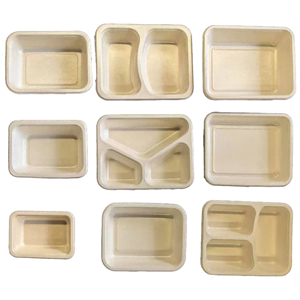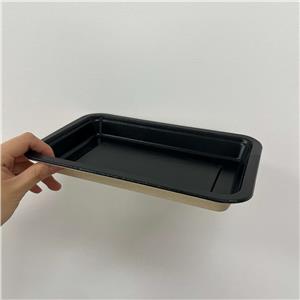Meal Prep Containers: Plastic vs. Bagasse-Coated Sealable Options Under Plastic Bans

Meal Prep Containers: Plastic vs. Bagasse-Coated Sealable Options Under Plastic Bans
With plastic bans popping up all over the world, more people are ditching plastic meal prep containers in favor of eco-friendly alternatives. Enter bagasse-coated, sealable meal prep containers—made from sugarcane pulp, they’re a solid choice for those looking to reduce waste without sacrificing convenience. But how do they really stack up against plastic? Let’s break it down:
1. Environmental Impact
Plastic Meal Prep Containers: These are made from petroleum-based materials that take hundreds of years to break down. While some are recyclable, many end up in landfills or the ocean, adding to pollution.
Bagasse-Coated Sealable Meal Prep Containers: These are made from leftover sugarcane fiber (a byproduct of sugar production) and break down naturally in just a few months. The thin coating makes them durable while still being compostable, making them a much greener option.
2. Functionality & Performance
Plastic Meal Prep Containers: They’re tough, microwave-safe, and great at sealing in food without leaks. But some plastics can release harmful chemicals when heated, which isn’t ideal.
Bagasse-Coated Sealable Meal Prep Containers: These are sturdy, handle hot and cold foods well, and have an added coating to resist water and oil. They might not be as flexible as plastic, but they hold up well for meal prep and takeout.
3. Sealing & Storage Efficiency
Plastic Meal Prep Containers: Plastic lids snap on tightly to prevent leaks and keep food fresh, but they can be bulky and take up a lot of storage space.
Bagasse-Coated Sealable Meal Prep Containers: These are designed for easy stacking and efficient storage. Plus, they can be heat-sealed for an even stronger leak-proof barrier, making them a great alternative to plastic.
4. Regulations & Market Trends
Plastic Meal Prep Containers: Many places are banning or restricting plastic, making these harder (and sometimes more expensive) to use in certain regions.
Bagasse-Coated Sealable Meal Prep Containers: Since they’re fully biodegradable and plastic-free, they meet sustainability regulations with no problem. More businesses are making the switch to avoid fines and appeal to eco-conscious customers.
5. Cost Considerations
Plastic Meal Prep Containers: Typically cheaper upfront, but prices fluctuate based on petroleum costs and increasing plastic regulations. Plus, disposal and environmental costs add up over time.
Bagasse-Coated Sealable Meal Prep Containers: They may cost a little more at first, but they offer long-term benefits—better for the planet, compliant with plastic bans, and more attractive to customers who care about sustainability. As demand grows, prices are expected to become more competitive.
Final Thoughts
Plastic meal prep containers have been the go-to for years, but bagasse-coated, sealable meal prep containers are stepping up as a serious alternative. They’re eco-friendly, meet new regulations, and offer great functionality. If you’re looking to future-proof your meal prep game while making a positive impact, switching to bagasse is a smart move!




